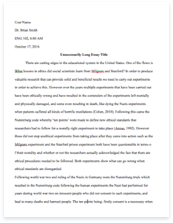No More Hiroshimas- Analytical Response to Poetry
A limited time offer! Get a custom sample essay written according to your requirements urgent 3h delivery guaranteed
Order Now‘No More Hiroshimas’ by James Kirkup and ‘Icarus Allsorts’ by Roger McGough can appear, on a superficial level, to be completely different poems. The former is long, gloomy and reflective, written in a narrative, free verse style, in first person. The latter is a short, satirical rhyming poem with an upbeat tone.
Upon closer analysis, however, the two pieces are not only bound together by a common overall theme of nuclear war, but share the same underlying theme and conclusion.
‘No More Hiroshimas’, as the title suggests, is a dismal reflection on life in post atomic bomb Hiroshima, Japan. The poem is basically an outright plea for the general public to realize the level of devastation war causes, and it strives to conjure anti-war emotions within the reader.
Throughout the poem, Hiroshima is portrayed several times as geared entirely towards the tourist trade. The poet seems to be pointing out that society can commercialize even death and destruction, selling ‘atomic lotion, for hair fall-out’ (1.8-9), and creating tourist attractions such as the ‘Atomic Bomb Explosion Centre’ (7.47), containing mementos of the blast.
The poet’s evident disgust at this commercialization appears to be one of the underlying messages in the poem, as it is made especially clear in this verse:
“Here atomic peace is geared to meet the tourist trade
Let it remain like this, for all the world to see,
Without nobility or loveliness, and dogged with shame
That is beyond all hope of indignation. Anger, too, is dead.
And why should memorials of what is far
From pleasant have the grace that helps us to forget?”
(5.34-39)
Death is a common factor used to describe many aspects of Hiroshima. The poet’s hotel room is referred to as an ‘overheated morgue’ (4.31), and in the next verse, he states that ‘anger, too, is dead’. ‘In the dying afternoon, I wander dying round the Park of Peace’ (6.40) infuses a sense of finality- in the following line the poet again refers to the Park of Peace as a ‘squat, dead place.’ Finally, ‘survivors weeding the dead brown lawns around the Children’s Monument’ is used perhaps to draw attention to the fact that children, too, died in the blast.
The closing lines “Remember only these, they are the memorials we need” (9.63-64) refers to the ‘other relics’, the reminders of the effect the bomb had on humans, rather than on the buildings, nature and the river. The poet is telling us that it is the people who really count when decisions are being made regarding the use of nuclear weapons.
‘No More Hiroshimas’ could not deliver a more disturbing message, with its effective use of imagery and language. It gives a very real appreciation of the devastation and futility of war.
‘Icarus Allsorts’, on the other hand, offers a satirical perspective of war. The poem is a lighthearted prediction of the coming about of World War Three. The tone, setting, language, and imagery differ unquestionably from those used in ‘No More Hiroshimas’.
There seems to be a theme of war being slightly ridiculous or laughable, with the mocking imagery used to portray different groups in society, such as the British Royalty, the rich, the poor, Germans, civil defense volunteers and CND supporters.
The nonchalant way in which war is addressed in ‘Icarus Allsorts’ is in sharp contrast to the grave tone of ‘No More Hiroshimas’. The poem effectively shows how one person’s mistake can have devastating consequences which affect the entire world, using what is known as ‘black humour’. It is only in the last few lines of the poem that the reader discovers the underlying similarity between ‘No More Hiroshimas’ and ‘Icarus Allsorts’:
“The general at the radar screen
He should have got the sack
But that wouldn’t bring
Three thousand million, seven hundred and sixty eight people back. Would it?”
This, like the final lines of ‘No More Hiroshimas’, infers that no matter what the land looks like, what got destroyed and how it can be covered up, what the real concern when it comes to nuclear war is the people, and how they are affected.
Both poems were extremely effective in their use of imagery to create an atmosphere, and are commendable in their ability to use contrasting language, yet succeed in delivering the same message.











